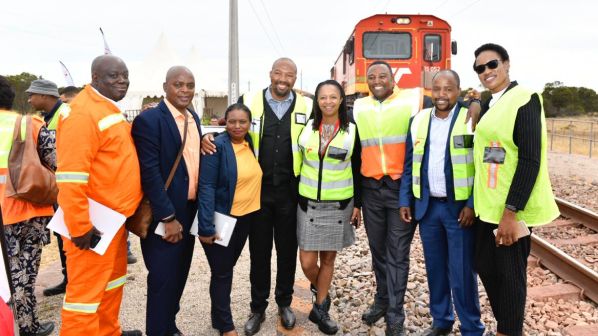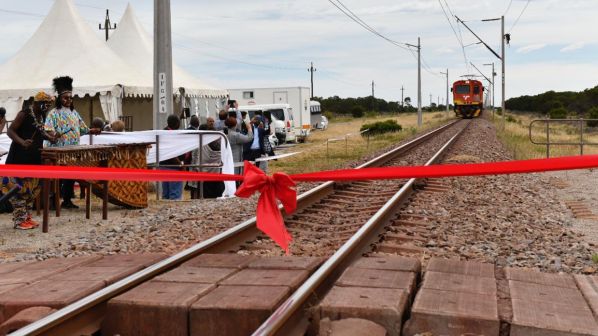The achievement follows a test with a 375-wagon train earlier this month. Transnet’s previous record was 342 wagons for a production iron-ore train.
Increasing train length from 312 to 375 wagons means Transnet can increase the payload of its manganese trains from 19,656 tonnes to 23,625 tonnes per train to cope with demand. Transnet’s share of export manganese has grown from 5 million tonnes in 2012-13 to a record-breaking 15.1 million tonnes in 2018-19. Transnet has concluded several manganese export capacity allocation agreements, the last of which was signed in September. It has also signed take-or-pay agreements with 10 South African manganese exporters.
To enable 375-wagon trains to run on the Sishen - Saldanha line, Transnet upgraded the section between Hotazel and Sishen to accommodate 30-tonne axleload trains. Transnet’s objective is to increase capacity by optimising the use of existing assets, locomotives and wagons.

“This is in line with TFR’s business objective of applying the heavy haul operating, maintenance, design, construction and best practice principles on general freight operations, and the Transnet strategy of migrating traffic from road to rail,” says Transnet Freight Rail’s acting CEO Mr Lloyd Tobias.
According to Mr Russell Baatjies, general manager of TFR’s iron-ore and manganese business unit, Transnet had looked at increasing manganese rail capacity by upgrading existing feeder lines and purchasing additional rolling stock. “That option would have cost us significant capital,” Baatjies says. “The project team was challenged to explore the use of technology through Industry 4.0 solutions, to achieve the same objective at minimum cost. Applying distributed power technology to increase the train length to 375 wagons will reduce capital requirements by over 90% of the initial estimate.”
Heavy-haul breakthrough
“This is another breakthrough for the heavy-haul railway industry,” says Mr Brian Monakali, TFR’s general manager and former chairman of the International Heavy Haul Association. “Rio Tinto, Australia, recently started the implementation of driverless trains in their iron-ore railway system. Transnet has now successfully operationalised a 375-wagon train. The collaboration on technical research and sharing of best practice by heavy-haul operators worldwide will surely keep pushing the operations, safety and rail capacity envelop to new levels.”

